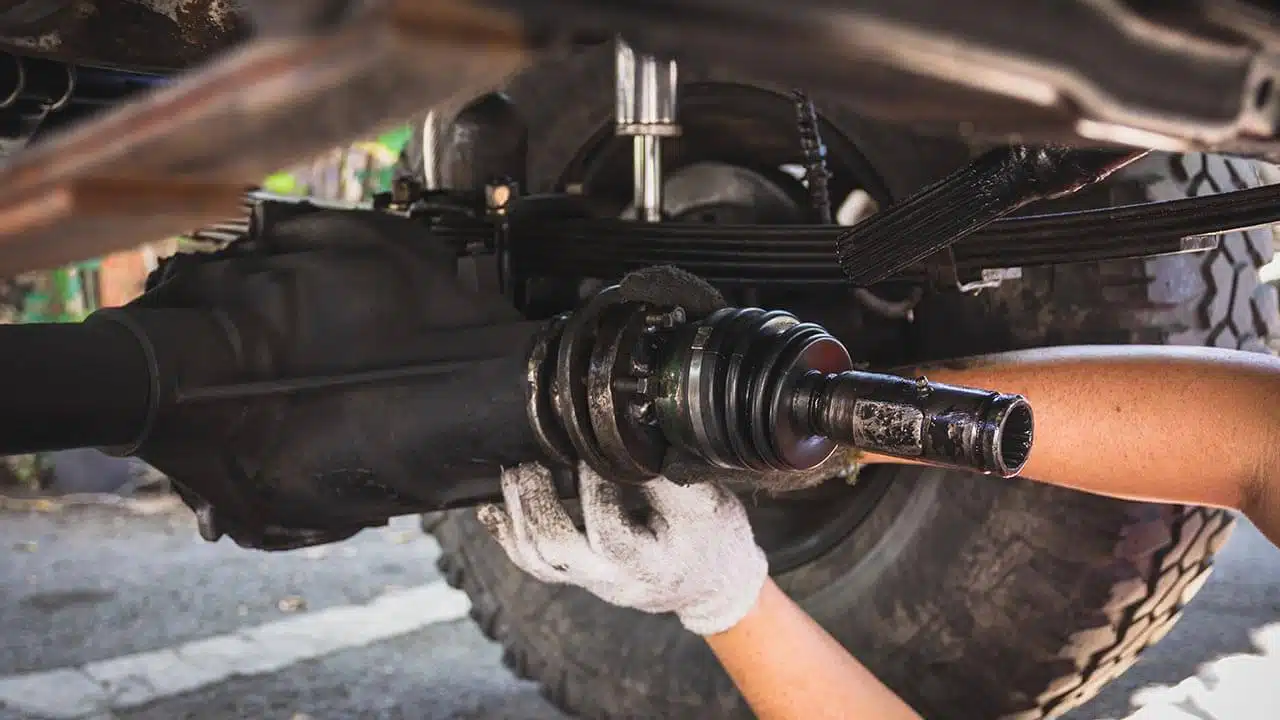A power steering fluid leak could result in the difficulty of steering and potential damage to a system. It usually indicates an issue with the steering assembly or pipes.
When it comes to maintaining vehicle safety and performance, early identification of power steering fluid leakage is essential. Often designed for the effortless and smooth turning of the steering wheel, this particular liquid facilitates power steering operation. Therefore, a broken line might be recognized by whining sounds or decreased maneuverability on the part of a vehicle owner.
Introduction Into the Power Steering Fluid Leak
Power steering fluid leakage can be dangerous. Early detection of the signs is important in maintaining a vehicle. A common evidence of leakage is red or brown collection beneath your car. Furthermore, a screeching sound made when you turn the wheel can mean that there is an issue with this system. Moreover, difficulty in rotating the steering wheel may indicate a reduction in the amount of fluid.
Non-repairing such leaks can lead to high costs and hazards to driving. This can cause failure of the steering system leading to loss of control over your vehicle. To avoid these potential problems regular inspection should be done on it? For instance, always keep your car running properly and not neglecting any sign related to fluid release.
Identifying the Source of the Power Steering Fluid Leak
Therefore, one has to examine vividly where power steering leakages are coming from. Start by checking hoses and connections for traces of dampness or fluids; these are often among first signs of leaking components like this. In addition, inspect hose integrity such as crack lines or poor fittings.
Turn towards pump and reservoir next. There could be some spots that exhibit oozing droplets when you take a close look at them directly without any instrument whatsoever. One more thing observed are seals/gaskets which may deteriorate thus causing leaks around pumps mostly through old age too other factors at play include cracked/damaged reservoirs which need thorough examination they must also be firm yet not in excessiveness.
Ensure all parts are tight fit together with no loose fitting around them or free movement at such places so that safety remains intact and nothing wobbles unnecessarily
Quickly Cure the Problem
For power steering fluid leakages, it is possible to use a temporary sealant. By so doing, these additives only seal the leaks for a while. It is almost like putting band-aids on cuts. They are poured into the power steering reservoir.
Home remedies also work. These may entail application of adhesive materials or simple mechanical adjustments. Each procedure has its pros and cons. Sealants are user friendly but might not be durable enough in future Mechanical adjustment needs hard work but will last longer.
Method | Pros | Cons |
|---|---|---|
Leak-Stop Additives | Easy to use | Temporary fix |
DIY Sealants | Quick | May not last |
Mechanical Adjustments | Lasts longer | Needs more work |

Long-Lasting Fixes for Leakage
A power steering fluid leak is something only a professional should handle. A professional repair company would easily identify the root cause. In most instances, it turns out to be faulty components. The appearance of a small leakage may not appear serious but it can lead to other problems in future. Mechanics will test each part of the system. They replace those that are faulty. That makes your car safe to drive again wherever you have issues with your braking system because your mechanics will fix them using their expertise according to what they believe is the problem and this will make your car safe again because you can’t afford spending money on repairs every time.
Preventative Maintenance Suggestions
Regular fluid checks are necessary for the maintenance of a vehicle’s power steering system. Spotting any drop in fluid level early can prevent leaks from worsening. Keeping the system well-lubricated with the right kind of fluid guarantees its efficiency at all times. Check the owner’s manual for appropriate fluid specifications.
You may also consider scheduling periodic system flush and fill services as required by your mechanic at least twice a year or as advised by him/her so as to ensure you are doing everything possible before major damages occur which could result into costly repairs on your part through changing them into new ones that enable them function properly similarly as when originally purchased up until today when they still perform well without bringing any kind of noise during driving
Properly Selecting Power Steering Fluid
Properly selecting power steering fluid is very important. Every car maker has a list of fluids that will work well. Before using any fluid, always make sure it matches the recommendations in the manual. Viscosity and additives are different for every type of fluid. When you do not use the right kind, your system can be damaged and its repair might cost more than what you anticipated.
Another notable factor to consider is quality or brand. Top brands usually have a higher standard of fluid quality. These fluids protect systems more effectively so they last longer. Make sure the price does not drive you into buying low-quality stuff. A superior product will ensure that there are no leakage issues while keeping up with efficiency levels within your system.
Right power steering fluid selection
Selecting the appropriate power steering fluid is critical. To make sure you use the right one, consult your vehicle’s manufacturer. See to it that you also check your owner’s manual first. Fluids differ in viscosity and additives. Employing the wrong one may cause damages and costly repairs.
Both quality and brand should be taken into account. Frequently, well-established brands tend to have better fluids. Such products will also protect your system for a longer period of time. There is no need of lowering the cost at the expense of quality. Superior fluids can, in fact, prevent leaks and help maintain system efficiency.
Aspect | Consideration |
|---|---|
Vehicle Compatibility | Check the owner’s manual for the right type. |
Quality | Choose fluids that promise longevity and protection. |
Brand Reputation | Opt for well-known brands with positive reviews. |

Knowing the cost involved
A power steering fluid leak could be difficult to handle. DIY repairs might seem cheaper but they require time, skill and the right tools for the job. Professional repair services on their part offer expertise at a higher price. It is cheaper in the long run to prevent leaks before they happen. Regular checks and maintenance are key here. This way saves you from unplanned repairs that may cause you frustration and money loss. Depending on your self-confidence and budget, you can choose between professional assistance or DIY method of fixing it. Think twice before making a final choice.
Future of steering technologies
With EPS, there is reduced need for regular maintenance aimed at fluid levels and leaks check hence lower ownership costs and improved vehicle dependability. Moreover, EPS contributes towards better fuel consumption rates leading to lesser emissions which align with world sustainability initiatives.
Conclusion
Acting on a power steering fluid leak promptly can save you future headaches and expensive repairs. Regular checks and maintenance are key aspects in ensuring your car’s steering system works fine. Remember, dealing with these problems early also keeps your car in good shape at all times as well as guarantees safe driving.
Be proactive about your car health More Update!
Truxedo Tonneau Cover FAQ
A red or brown liquid leaking from underneath your vehicle is indicative of such a problem. Similarly, you might discover that turning the wheel has become difficult, hear a whining sound, or see that your power steering reservoir is short on fluid.
If you want a quick fix for a power steering fluid leak, use some kind of stop-leak – this will help swell and condition the seals thus temporarily stopping any leakage. Nevertheless, it would be better if you took your car to an expert mechanic who could assess your situation and provide an everlasting solution rather than using this product.
The problems associated with a power steering fluid include damage to its system due to seals breaking; hoses and connectors that get worn out; corroded parts leading to leaks in the system and just plain old age.
It is not recommendable to drive when power-steering wear occurs because it can destroy the whole unit. The shortage of the PSF may result in heating up then causing malfunctioning of the pump hence loss of steerage ability.






